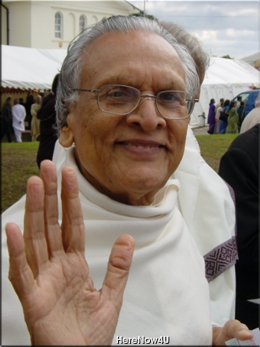
From the right vision and right knowledge, we go to right conduct. Right conduct means refraining from what is harmful and doing what is helpful. In short, it is what helps the self to get rid of those vibrations of karmas, which lead to bondage and suffering. It is not a commandment imposed from outside which you have to do or you will be punished. That is not Jain's approach. Conduct is comprised of principles, which help you conduct your life, to go towards that awareness of self-experience.
Now from this awareness grows the feeling of reverence for life, Ahimsa. The opposite of Ahimsa is Himsa, which means to kill, to cause pain to any life, or to separate life from the body. Any harm, which is done with thoughts, words, or action, is himsa. Ahimsa means no harm is done in thoughts, words or action. When one starts feeling this ahimsa, one starts living with life. When you watch in a tranquil state, you see that you do not want to be hurt. And then you practice: "As I do not want to be hurt, no one wants to be hurt, so I should not hurt anybody. By not hurting others, I am not hurting myself. I am not causing violence to my pure love."
By avoiding violence to yourself you don't do violence to others. What you see inside yourself you see outside in all living beings. What you see in microcosm, you see in macrocosm. My father used to give the example of a matchstick. A match must first burn itself in order to burn anything else. Violence is the same way. Before we do any harm to others, we do harm first to ourselves. So whenever we try to hurt any other form of life in thought, word or deed, we hurt ourselves first. Because we do not want to harm our consciousness, we work to avoid doing any harm to anyone else.
 Gurudev Chitrabhanu
Gurudev Chitrabhanu
